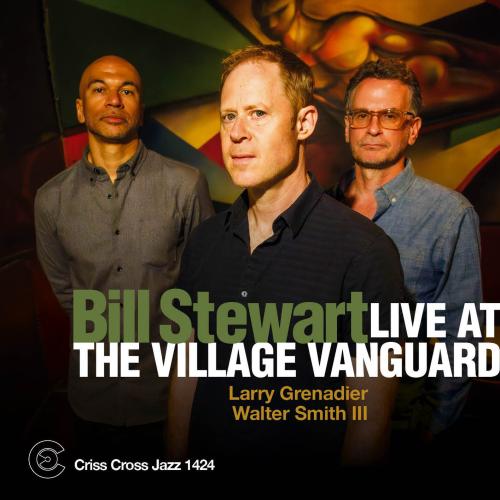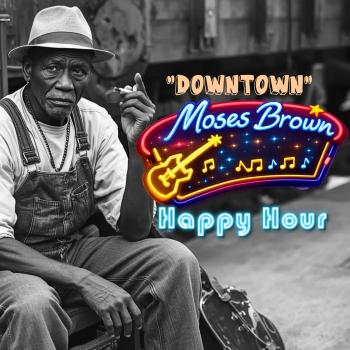
Live at The Village Vanguard Bill Stewart featuring Walter Smith III and Larry Grenadier
Album Info
Album Veröffentlichung:
2025
HRA-Veröffentlichung:
25.04.2025
Label: Criss Cross Jazz
Genre: Jazz
Subgenre: Contemporary Jazz
Interpret: Bill Stewart featuring Walter Smith III and Larry Grenadier
Das Album enthält Albumcover
- 1 Ten Foot Two 09:15
- 2 Purple Veil 07:12
- 3 Mynah 07:38
- 4 Turquoise 05:42
- 5 Space Acres 09:14
- 6 See Ya 08:07
- 7 How Long Is Jazz 09:11
- 8 Ace 06:41
- 9 7.5 12:02
Info zu Live at The Village Vanguard
„Ich habe bei vielen Gelegenheiten im Village Vanguard ganz nah bei oder neben den Großen gesessen“, sagt der herausragende Schlagzeuger, Komponist und Bandleader Bill Stewart, um seine erste Live-Aufnahme im Vanguard zu kontextualisieren. Wenn man nah dran sitzt, bekommt man die Körpersprache, die ganze Stimmung des Schlagzeugers mit, den man sich ansehen will“, sagt Stewart. „Das ist der richtige Ort.“ Es ist sicher, dass mehr als ein paar Schlagzeuger-Aspiranten sich die Mühe machten, Stewarts Stimmung von diesem privilegierten Platz aus zu beurteilen, als er zwischen dem 18. und 23. September 2023 den Bassisten Larry Grenadier und den Tenorsaxophonisten Walter Smith III zu ihrem dritten einwöchigen Trio-Engagement im Vanguard zusammenrief.
Eine der angesagtesten Bands im Modern Jazz weltweit. Das Trio bespielte bereits zwei mal das legendäre Village Vanguard in NYC für eine ganze Woche am Stück. Bill Stewart und Larry Grenadier arbeiteten schon oft zusammen als Rhythmusgruppe in namhaften Formationen, wie dem Pat Metheny Trio 99/00 oder in John Scofields Band Mitte der 90er Jahre und sorgten immer für innovativen Sound und inspirierenden Groove.
Mit Walter Smith III, einem der renommiertesten und hipsten Tenorsaxophonisten der Welt, entsteht eine Band, die man guten Gewissens, als konsequente Fortführung der langen Tenorsaxophon-Trio-Tradition im Jazz bezeichnen kann. Sozusagen die legitime Nachfolge der berühmten Trios um Tenorlegenden Sonny Rollins und später Joe Henderson.
Bill Stewart, Schlagzeug
Larry Grenadier, Kontrabass
Walter Smith III, Tenorsaxophon
Aufgenommen am 22. und 23. September 2023 in New York City, NY, USA
Engineering: James Farber
Mix: Tyler McDiarmid
Mastering: Nate Wood
Produziert von Bill Stewart & Jerry Teekens
Bill Stewart
William Harris “Bill” Stewart was born on October 18, 1966 in Des Moines, Iowa. Bill Stewart’s father was a trombonist and a big fan of Bill Harris, an acclaimed jazz trombonist from the 1940s and 1950s jazz scene. His love for Bill Harris’ work was such that he named Bill Stewart after him, as a tribute.
Bill Stewart’s first exposure to music came from listening to his parents’ collection of jazz and rhythm and blues (R&B) records. Listening to records was the most effective way of getting exposed to different styles of music, since Iowa was a relatively isolated state. Live jazz concerts, for instance, were very rare in that area of the United States.
Bill Stewart began playing drums at the age of 7. He taught himself how to play drums by playing along to records at his house. Therefore, Bill Stewart didn’t get the most traditional of drumming educations in jazz. In fact, Bill Stewart learned jazz drumming using matched grip, a grip that’s mostly associated with rock drumming and the one he prefers using till this day. Drum lessons, drum books, and drum rudiments was something he would get into later on.
Bill Stewart continued developing his drumming skills in high school by performing in its orchestra and in a top 40 cover band. He also furthered his studies in jazz by going to the Stanford Jazz Workshop in California, a summer music camp where he was lucky enough to meet jazz legend Dizzy Gillespie.
After successfully graduating from high school, Bill Stewart enrolled at the University of Northern Iowa in Cedar Falls, Iowa. There, Bill Stewart played in the orchestra and in the jazz and marching bands. Bill Stewart wound up transferring to the William Paterson University in New Jersey, where he enrolled in its Jazz Studies and Performance program. During his stint there, Bill Stewart performed in ensembles directed by Rufus Reid, took composition lessons from Dave Samuels, and studied drums under Eliot Zigmund and Horacee Arnold. John Riley and Ed Blackwell – legendary jazz drummers – gave him some drum lessons in college as well, when subbing for Eliot Zigmund. Joe Lovano was another musician that subbed for Eliot Zigmund. He would latter join Bill Stewart in many of his musical endeavors.
Bill Stewart made his recording debut in 1987, while still in college, by contributing drums for Scott Kreitzer’s Kick’n Off. However, the album would only see the light of day in 1992. After graduating in 1988, Bill Stewart moved to Brooklyn, New York. He began establishing his reputation as a musician by appearing regularly at jam sessions that took place in New York. Word of mouth and his constant performances at jazz clubs helped him secure his first gigs, which were with pianist Larry Goldings and guitarist Peter Bernstein. At one of their regular concerts at Augie’s Club in Manhattan, Bill Stewart was invited by former James Brown and Parliament-Funkadelic saxophonist Maceo Parker, who was at attendance, to take part in the recording sessions for his album Roots Revisited (1991).
Shortly thereafter, Bill Stewart was invited to join John Scofield’s quartet, with saxophonist Joe Lovano and either Dennis Irwin or Marc Johnson on the double bass. This was one of Bill Stewart’s first regularly touring bands. After that band, Bill Stewart wound up performing for various other bands John Scofield put together.
Dieses Album enthält kein Booklet







